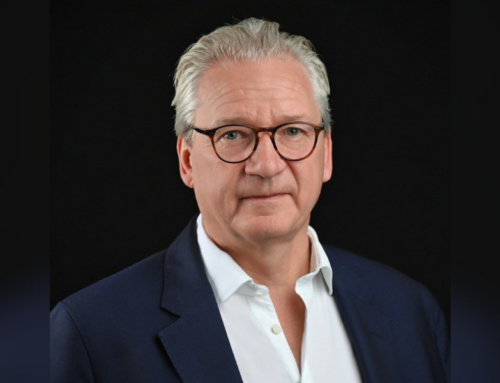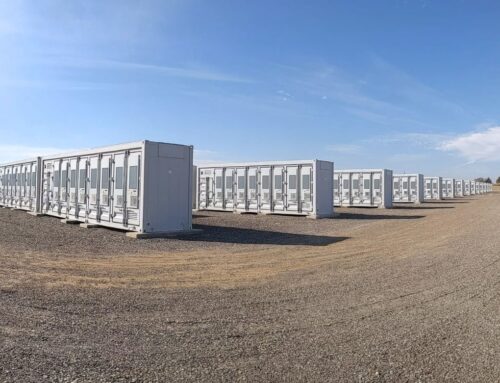Why won’t PJM let batteries and clean power bolster a stressed-out…
October 3, 2024

Gabel Associates estimated that adding batteries to the estimated 9.7 gigawatts of solar power now expected to be available on PJM in 2026 and 2027 could boost those projects’ effective load-carrying capacity — a measurement of their ability to reliably provide power during times of peak grid need — from just under 2 gigawatts to nearly 8 gigawatts. Resources that can provide such a boost are costly and in short supply on PJM’s grid.
How PJM has closed the door on SIS
Unfortunately, Borgatti said, PJM’s rules for surplus interconnection service have rendered the technique more or less “useless” in the region — a stark contrast to how other grid operators have found ways to make it effective.
It’s always possible that adding new resources to an already approved interconnection could negatively impact the grid, he said. It’s also possible that they might cause delays to other projects seeking interconnection, which wouldn’t be fair to developers that have been waiting for years to get online.
But other grid operators have figured out ways to work through these challenges, Borgatti said. He cited the examples of Midcontinent Independent System Operator (MISO) and Southwest Power Pool (SPP), which operate grids across the U.S. Midwest.
MISO’s SIS process allows project owners to conduct studies to determine whether the proposed additions would trigger the need for grid upgrades or interfere with projects awaiting interconnection. If the answer is yes, they can be denied. But if the answer is no, “that project can go forward,” he said.
SPP has a similar construct that, while a bit more time-consuming, allows the necessary studies to be completed within “a year or two,” Borgatti said. All in all, he described those approaches as “the right balance of making sure that there is the ability for conventional interconnection projects to move forward and making sure the grid stays reliable, but also accelerating deployment.”
PJM’s approach, by contrast, essentially presumes that any surplus interconnection request will have negative consequences for the grid or for the projects waiting in the queue, he said. It then uses that presumption to justify denying them without even studying the potential consequences, he said.
“They’ve adopted a standard that says, ‘If it’s possible that interconnecting something could impact another project in the queue or trigger a transmission upgrade … at some hypothetical point in the future, we’re not going to allow it,’” he said.
EDPR’s complaint to FERC documented how PJM applied this seemingly capricious approach to deny the addition of 200 megawatts of solar to the developer’s 200-megawatt Meadow Lake 1 wind farm in Indiana. EDPR submitted its initial request in August 2023, making clear that it would operate the wind and solar farms to keep total output to the grid within the site’s existing 200-megawatt limit.
In March 2024, PJM asked the developer if it intended to operate the existing wind farm and the new solar installation simultaneously. When EDPR replied that it did, PJM took less than six hours to reject the request on the grounds that this “would produce material impacts” to the transmission system. PJM did not offer to conduct a study to determine whether that impact would in fact be a problem.
Denying proposals in this way defies FERC’s instructions to grid operators, EDPR argued in its complaint.
In an August filing with FERC, PJM disputed the validity of EDPR’s complaint, noting that FERC approved its current SIS methods in 2020. It also disputed the idea that the technique could be helpful in meeting future grid needs, stating that it “does nothing to respond to the need for additional capacity to meet future demand.”
PJM’s statements to FERC indicate that it doesn’t see its current approach to surplus interconnection service as a problem. In its May filing laying out its plan to meet FERC’s latest interconnection mandates, PJM stated that “few developers have requested” surplus interconnection service and asked to be exempted from offering “a service no one in PJM is requesting.”
EDPR pushed back against that characterization in its complaint to FERC, noting that it and other developers have been trying for years to propose changes to PJM’s approach. “There is no puzzle as to why Surplus Interconnection Service is not widespread in PJM,” the company wrote. “PJM has adopted processes that prevent its use.”
Melissa Alfano, senior director of energy markets and counsel for the Solar Energy Industries Association, said during the September webinar that the lack of requests from developers is a direct result of PJM’s approach of preemptively denying those few that have been made. Planning out such proposals takes time and costs money, and “there’s no incentive to put up that money just to get that request rejected,” she said.
Looking for solutions to SIS
As developers and environmental groups push for federal intervention into PJM’s surplus interconnection rules, some experts see a glimmer of hope in another pathway to reform: PJM might be open to working directly with stakeholders on the issue via a separate wonky grid process.
PJM is in the midst of a “generator replacement process” to study alternatives to paying money-losing coal plants to stay open for years until new transmission lines or power plants can be built to backfill the reliability problems created by their closures. Batteries could be one such option, as underscored by studies evaluating the Brandon Shores plant in Maryland, a PJM territory, said Mike Jacobs, senior energy analyst for the Union of Concerned Scientists.
PJM had initially proposed that it should apply its current SIS approach to these generator replacement studies, “which would render that useless too,” Borgatti said. In practice, this would likely create a dynamic similar to how PJM handles SIS requests today: The grid operator might simply cast aside useful alternatives (namely batteries) to old, uneconomic coal plants without actually studying them.
More recently, however, the grid operator has “signaled some receptivity” to performing studies that “evaluate actual impacts,” he said. If PJM is willing to embrace a more thoughtful approach to generator replacement, the logic goes, it might be willing to do the same on SIS.
Borgatti and Mindham both said they’d prefer to see this happen — for PJM to use its ongoing generator replacement work to engage with its stakeholders on changes to its SIS approach.
EDPR’s complaint to FERC “has some advantages,” Mindham said, as it brings the matter directly to the federal agency to resolve. “But it has a pretty big disadvantage, and that is there’s no statutory timeline for FERC to rule.”
It is also possible that EDPR and PJM could resolve this dispute without FERC’s intervention. Last week, EDPR and PJM filed a joint motion with FERC to postpone consideration of the complaint to give them time to consider settlement discussions.
Meanwhile, FERC may choose to deny PJM’s request to eliminate surplus interconnection altogether as part of its plan to comply with Order 2023. But it could take a year or more of back-and-forth between FERC and grid operators for the agency’s orders to yield concrete changes in how grid operators set and administer rules to comply with them.
Mindham said he hopes PJM will respond to the repeated demands from energy developers and other stakeholders “as a clear signal that they should do something quickly in the stakeholder process and come up with a solution that works for everyone. Because I’m not sure that FERC rules on a timeline that really helps people.”
Search
RECENT PRESS RELEASES
Related Post



